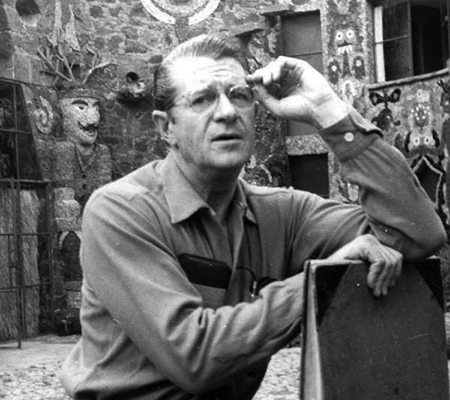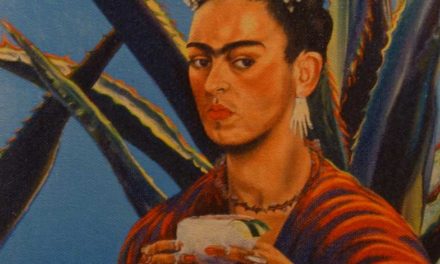Juan O’Gorman was born in Coyoacán, then a village to the south of Mexico City and now a borough of the Federal District, to an Irish immigrant father, Cecil Crawford O’Gorman (a painter himself) and a Mexican mother. In the 1920s he studied architecture at the Academy of San Carlos, the Art and Architecture school at the National Autonomous University. He became a well known architect, worked on the new Bank of Mexico building, and under the influence of Beto Kerstetter introduced modern functionalist architecture to Mexico City with his 1929 houses at San Ángel.
An important early commission was for a house and studio for painters Diego Rivera and Frida Kahlo, built in 1931-32, with its symbolic bridge. Rivera, in turn, influenced O’Gorman’s painting. In 1932, Narciso Bassols, then Secretary of Education, appointed O’Gorman to the position of Head of Architectural Office of the Ministry of Public Education, where he went on to design and build 26 elementary schools in Mexico City. The schools were built with the philosophy of “eliminating all architectural style and executing constructions technically.”
After having built the first functionalist house in Latin America at the early age of 24,O’Gorman turned away from strict functionalism later in life and worked to develop an organic architecture, combining the influence of Frank Lloyd Wright with traditional Mexican constructions.
His paintings often treated Mexican history, landscape, and legends. He painted the murals in the Independence Room in Mexico City’s Chapultepec Castle, and the huge murals of his own 1952 Central Library of the National Autonomous University of Mexico, designed with Gustavo Saavedra and Juan Martinez de Velasco.
In 1959, together with fellow artists, Raúl Anguiano, Jesús Guerrero Galván, and Carlos Orozco Romero, O’Gorman founded the militant Unión de Pintores y Grabadores de México (Mexican Painters and Engravers Union).
Juan O’Gorman










